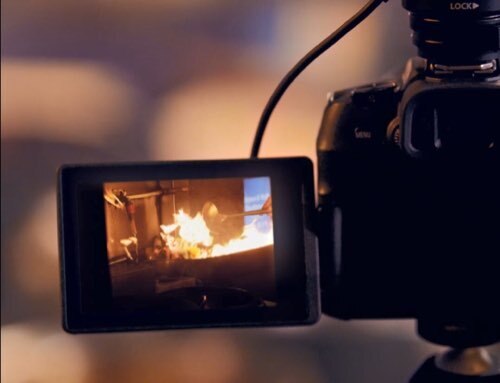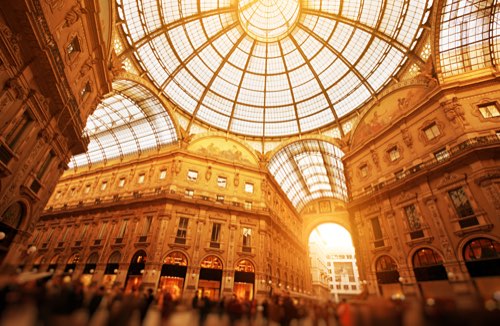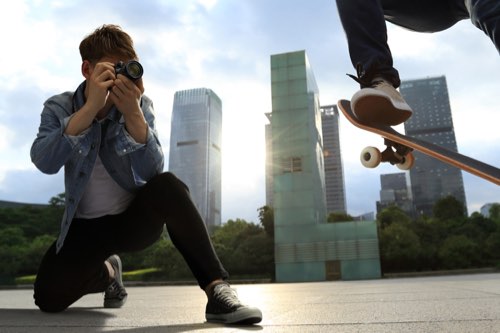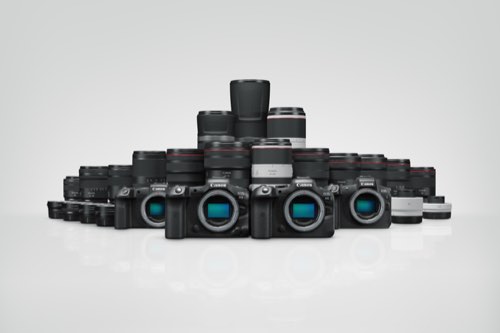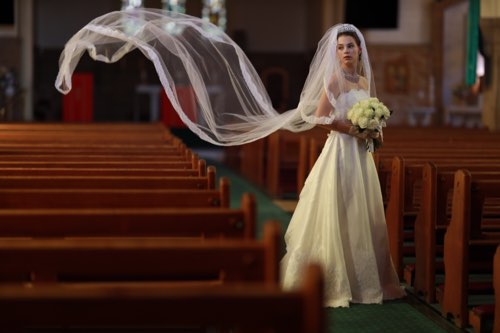f/2.8 zoom lenses are bright enough to photograph stars, with the added advantage of framing flexibility.
In this 4-part series, we share some ideas for taking full advantage of what your f/2.8 constant aperture zoom lens can do, as well as tips for fine-tuning them to get a better shot. Because why do what a variable aperture zoom lens can do when your f/2.8 zoom can do more?
In Part 3, learn about the advantages of using an f/2.8 zoom lens for astrophotography, as well as some shooting tips. (Reported by: Chikako Yagi, Digital Camera Magazine)

This is Part 3 of a 4-part series. Click on the links to read the other parts!
- Part 1: Highlighting a Subject
- Part 2: Creating Depth & Dimensionality
- Part 4: Up Your Low Light Landscape Photography Game
Why use an f/2.8 zoom lens for star photography?
A lens with a large maximum aperture (also described as a “fast” lens or a “bright” lens) always helps when you’re photographing at night. Such lenses allow more light to enter and reach the sensor at any given time, which has two key benefits for photographing stars:
1. You can capture stars as points
Stars will trail if the shutter speed is too slow. A large aperture lens lets you set a faster shutter speed.
2. Cleaner images
You can also set a lower ISO speed to avoid image noise without compromising on exposure.
While f/1.4 or f/1.8 wide-angle prime lenses exist, it helps to have the flexibility to change the framing when you’re shooting in an unfamiliar location and don’t know what to expect.
An f/2.8 zoom lens lets you zoom out to capture the scenery on the ground along with the starry sky, or zoom in to specific stars or formations—and it’s sufficient for keeping noise at manageable, if not practically invisible levels. Don’t hesitate to bring your f/2.8 wide-angle or standard zoom lens the next time you go stargazing!
Know this: f/2.8 is sufficient for keeping noise minimal


An f/2.8 zoom lens allows sufficient light to reach the camera’s image sensor so you can, for example, use ISO 3200 instead of the ISO 6400 and above you might have to use with a lens with a maximum aperture of f/4 or higher. The difference in noise level can be huge, as the above close-up example shows!
Also see:
Camera Basics #5: ISO Speed
Pro technique 1: Adjust your focal length to achieve different effects
A focal length of around 24mm is sufficient for photographing starscapes (landscapes against the starry sky), but you get different results if you go wider.
24mm: Emphasises terrestrial scenery and specific stars

EOS R5 Mark II/ RF24-70mm f/2.8L IS USM/ FL: 24mm/ Manual exposure (f/2.8, 8 sec)/ ISO 800/ WB: Auto
24mm is wide enough to capture not only a huge expanse of sky, but also the scenery on the ground along with it. You’ll have lots of flexibility to adjust the framing when using a zoom lens, so feel free to experiment until you achieve your ideal land-sky balance!
15mm: A dynamic feel with lots of sky

EOS R5 Mark II/ RF15-35mm f/2.8L IS USM/ FL: 15mm/ Aperture-priority AE (f/2.8, 15 sec)/ ISO 1250/ WB: Auto
An ultra-wide-angle focal length like 15mm lets you include even more of the sky. This not only infuses the composition with greater dynamism, it also brings out a sense of scale: terrestrial objects look much smaller, which makes the sky look even vaster in comparison.
Pro technique 2: Use a shutter speed that avoids star trails
Locations for star photography are inherently darker than locations for most other types of night photography. You can’t avoid using longer exposures even when using a large aperture lens. And because of Earth’s rotation, such long exposures can result in blurry star trails.
Nearly all methods of calculating the longest exposure you can use before the stars start trailing depend on your focal length. The longer your focal length, the shorter the exposure has to be, whereas you get more leeway with shorter focal lengths. I recommend the Rule of 200:
200 ÷ Focal length = Max. exposure time
| Focal length | Shutter speed |
| 15mm | 200 ÷ 15 = 13 sec |
| 16mm | 200 ÷ 16 = 13 sec |
| 20mm | 200 ÷ 20 = 10 sec |
| 24mm | 200 ÷ 24 = 8 sec |
If you are using an APS-C camera, your calculation should account for the 1.6x crop factor, i.e.: 200 ÷ (focal length x 1.6) = Max. exposure time.
Know this: How it’s different from the other rules
The Rule of 200 is more conservative than similar rules such as the Rule of 500 or Rule of 600. It is ideal for when you have a low tolerance for trailing, are using a high-megapixel camera, or need to deliver high-resolution images for purposes such as large gallery prints. For other uses, you can use the Rule of 500 for a longer maximum exposure time. These “Rules” are ultimately just guidelines—you decide what works best for you!
More tips and ideas for starscapes/astrophotography in:
- Astrophotography Techniques to Try with the EOS R
(Suitable for other EOS R series cameras too!)
- Shooting to Balance Colours: The Glittering Milky Way Over Greenery
- Nailing the Shot: Moon and Milky Way Stars Over the Sea
- Astrophotography: What To Avoid When Shooting Stars
- One Location, Two Looks: Photographing a Lighthouse in Moonlight v.s Under the Stars
Recommended f/2.8 zoom lenses
Wide-angle f/2.8 zoom lenses
24mm is the wide-angle end of standard zoom lenses like the RF24-70mm f/2.8L IS USM and RF24-105mm f/2.8L IS USM Z, and it’s sufficient. However, as we’ve shown above, you can achieve more dynamic images with an ultra-wide-angle zoom lens like the RF15-35mm f/2.8L IS USM or RF16-28mm f/2.8 IS STM.

Left: RF15-35mm f/2.8L IS USM
Right: RF16-28mm f/2.8 IS STM
The RF15-35mm f/2.8L IS USM is a professional-grade lens designed to provide the best possible pictures under the harshest conditions. It has a dust- and drip-resistant structure that is great for outdoor shooting, and special lenses and coatings so you get clean and clear images even when shooting into backlight. It takes 82mm screw-in filters.
The RF16-28mm f/2.8 IS STM is a smaller and lighter f/2.8 wide-angle zoom lens for users who prioritise portability. Besides its excellent optical quality, it is also weather-sealed, though not to the same extent as its L-series counterpart. It takes 67mm screw-in filters.
About the Author
A monthly magazine that believes that enjoyment of photography will increase the more one learns about camera functions. It delivers news on the latest cameras and features and regularly introduces various photography techniques.
Published by Impress Corporation
Chikako Yagi was twenty when she started teaching herself photography using a film SLR camera. She left regular employment to become a full-time landscape photographer in 2016. An apprentice of renowned photographers such as Kiyoshi Tatsuno and Tomotaro Ema, she is a member of the Shizensou Club, which was founded by the former and is one of Japan’s most famous landscape photographers’ clubs. In 2013, she was selected as one of the Top 10 Photographers of the Tokyo Camera Club.
www.chikakoyagi.com
Instagram: @chikako_yagi








